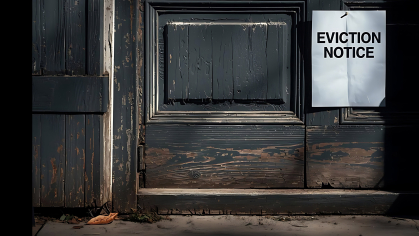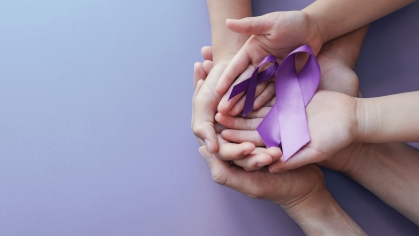Environmental Justice and Social Work: An Interview with Mariann Bischoff & Christine Morales
Mariann Bischoff, Teaching Instructor and Management and Policy Field Specialist, and Christine Morales, Assistant Director of Recruitment & Admission and Assistant Professor of Teaching, developed a course at Rutgers School of Social Work teaching environmental justice through a social work lens. They share their approach to teaching this topic, their hopes for their work, and some of the opportunities available to social workers interested in environmental justice.
Rutgers School of Social Work: Tell us about the work you’re doing bridging the fields of environmental justice and social work.
Christine Morales: Most of our work falls at the intersection of social work, environmental justice, and education. We are situated where all three of those pieces meet. We are trained as social workers, and our passion is environmental justice, so we’re channeling this merging through education. This manifests in many ways, specifically in our work with students in the classroom and with professionals by providing continuing education opportunities and professional workshops.
RUSSW: What are your goals with this work?
CM: I want to help shift the social work paradigm. Mariann and I have noticed that social work tends to be very human centered, or anthropocentric. This idea has been supported by many social work scholars.
There’s an invisible hierarchy that places humans at the top. We see the deep interconnections people have with the world. As a result, we work to remove that hierarchy in our profession and make it less human centered. One of my goals is to galvanize more social workers into this work, in whatever form it takes for them. We're not prescribing certain interventions, but we are encouraging them to get involved. There are so many social workers out there, and our profession can certainly contribute to creating greater environmental justice in the world.
Mariann Bischoff: One of the problems is that climate change and environmental degradation are such huge issues that people can feel demoralized by them. Whatever changes people are making individually or in their personal lives, from lowering the heat to recycling, might feel like they are not making a difference. We have to help people see that as a community, we are collaboratively making a difference. Also, as people begin to rediscover humans’ interconnections with the Earth, they embark on a deep journey that involves protecting the planet and all its inhabitants. Instead of viewing the work as daunting or unmanageable, it becomes nourishing and strengthens connections among people working on that same issue in different ways.
RUSSW: How can people get involved in this work?
MB: People can get involved on a personal level, a micro level, a mezzo level, and a macro level. In the course we teach on environmental justice, we have students complete an intervention assignment. One student was inspired by the class to start a community garden. Another student did significant research on plastics, and it changed how she relates to plastics, but she's also very interested in doing advocacy work related to plastics. The personal level is important and strongly influences people’s more macro-level policy work.
CM: Because this issue is so large, the work needs to be broken down into smaller, actionable items that can be infused into the work that social workers already do. One concrete example for direct service practitioners is to change their clinical assessments to include questions like “How have environmental injustices impacted your life?” Just incorporating this concept into practices that we already do is one easy way to get started. And, in that example, awareness grows. It grows in the clients, the practitioners, and within agencies. As more clinicians and direct service social workers ask more clients how environmental injustices have impacted them, needs assessments can be done to better understand the scope of the problem. This gathering of information will better inform advocacy work.
RUSSW: What are some of the challenges you face doing this work?
CM: Many of us don’t know where to start. Mariann and I, sensing the need for social workers to be involved with environmental justice, just jumped in by creating an environmental justice class. As we gain experience, act, and build a community of allies, we are empowered to continue to do the work. For instance, our relationship is enriching. She and I have co-created a space that fosters support and innovation aimed at environmental justice.
MB: One of the challenges in teaching the work and how we approach teaching is making sure not to teach at the students but to instead create a collaborative community environment where everyone's voice is important. It seems like a radical approach, and it’s hard for me because I have been conditioned to believe that “real” teachers lecture from PowerPoints. It’s unhelpful and inefficient thinking, and even with tremendous positive feedback from students on how empowering our teaching methods are, those thoughts can still creep in. Creating a place for people to believe in themselves and further their wisdom and lived experiences is what Christine and I do.
CM: Another challenge is the issue of the environment has typically been addressed by biological and environmental scientists, so carving a niche for the social work profession is both an opportunity and a challenge. Mariann and I were once at a conference mainly for scientists, and we asked the organizer how social workers could get involved. His response was “just show up, just be there.” What’s important is getting my voice heard, as a woman of color, but then also getting my voice heard as a representative of social work. Those are the challenges. Luckily, all of the scientists that we've been working with have been very open, and they want to hear from us. It's a matter of finding that connection and creating those networks and developing or joining a coalition.
MB: Social workers can take on so many roles in general and in environmental justice work specifically. We can incorporate environmental justice work in direct practice, mezzo and macro work, as we mentioned. Recently I have been thinking about our roles as facilitators. I strive to be a facilitator in the classroom. Also, in working with politicians, activists, and scientists, I see a powerful role for us as facilitators. The direct practice skills of beginning where people are, listening deeply and helping people communicate, coupled with identifying and working to change power imbalances make social workers necessary participants in environmental justice work.
RUSSW: What is your approach to teaching, Christine?
CM: I'm in the doctoral program at the Graduate School of Education, and if I had to name my teaching pedagogies, the one that's overarching as of late is the trauma-informed teaching practices. I recognize that most students have experienced trauma, even prior to the current pandemic. Both create turmoil for students. I try to acknowledge that trauma while encouraging them to learn. I try to create a classroom space that’s safe, where students feel like they can let go and just be a student or part of the classroom community for the time that we have together. It’s amazing how much students contribute when they feel accepted and unjudged.
RUSSW: What do you enjoy most about teaching environmental justice and social work?
CM: The course is genuine to who we are, and the assignments are exciting to me. The first assignment we asked students to complete was a mind map. We wanted to understand how students conceptualized the topic. We’ve asked them to do more creative things like create videos, draw pictures, and write poems in their discussion posts. I look at their responses, and I’m blown away. Many of the students haven’t done this kind of creative work in years. My students expressed their gratitude for allowing and encouraging innovations. This provides them with opportunity to think creatively about social issues and potential interventions. That inspires me and brings me joy.
MB: It's so profound that it can be hard to put it into words. We’re seeing students reconnect with themselves and feel that their voice really matters. Students share that for the first time they know they can make a difference in the issues that really matter to them. Often these issues have affected them and their families directly.
RUSSW: What do you think social work’s role should be in environmental justice?
MB: Part of our work focuses on facilitating different groups to come together. Social workers have strong people skills and community organizing skills, so we could be in a room with a group of community members, scientists, and politicians and our role could be to move discussions forward and create spaces for connections.
CM: When I think about environmental justice, I consider it synonymous with economic, racial, and social justice. Much of the work social workers are already doing is well on its way to addressing environmental injustices, but we need to do it more intentionally. Our code of ethics provides the foundation, but we just have to shift it slightly so that humans are not at the top of the invisible hierarchy.
MB: We have to think of the earth and all its inhabitants as our clients, not just humans. That idea comes from the work of Lena Dominelli, whose Green Social Work book is a required text in our class.
RUSSW: What are some of the opportunities that exist in bringing environmental justice and social work together?
CM: Social workers are already placed in the areas where environmental injustices are occurring. Therefore, it’s a matter of including the environmental justice work into a social worker’s existing practice. People can also grow awareness of environmental issues and campaign for things they believe in.
MB: In addition to what Christine just shared, another opportunity is within field education. Placing students in organizations that work on environmental justice issues can create opportunities to develop relationships between universities and environmental justice organizations. In so doing, we expand social work values and social work roles in places that don’t primarily focus on social work.



